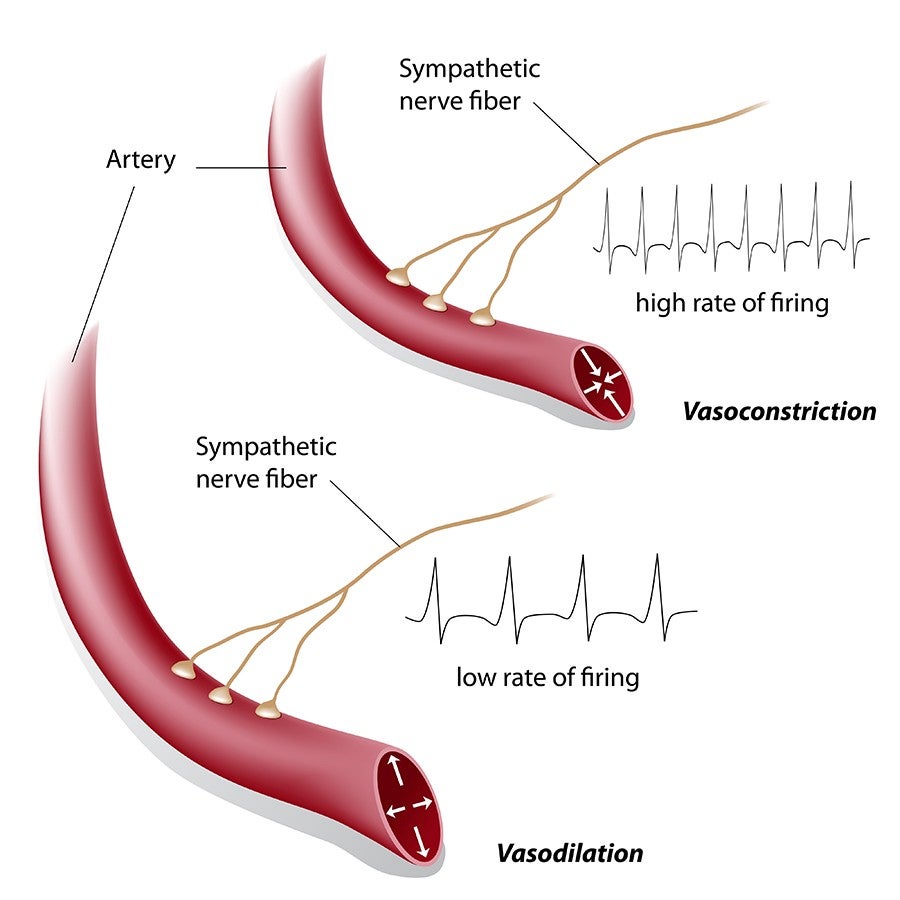The idea of “blue balls” has always struck me as more of a defeated metaphor — disappointment over a hookup that fizzled out — rather than an actual medical condition. “I find it more appropriate to relate the color with how sad the situation really is,” sighed Sam, 32, to Bustle a couple of years ago. “It makes you feel blue.”
But blue balls, as a malady, are indeed real. Symptoms include feeling as though you’ve “just been donkey-kicked in the testicles by an irate ass” — at least per my friend Dan. “Doctors don’t call it blue balls, though,” says Alex Shteynshlyuger, our go-to MD for all things cock-and-balls. “The closest medical term for what you describe would be testicular vasocongestion.”
After talking to Shteynshlyuger and spending some time reading up on the topic, it turns out we were naive about more than just the proper medical terminology. So we started asking anyone with a pair — and a few without — about this notoriously achy ailment. Here’s where the ball(s) dropped:
- Let’s first take a step back and talk about regular-colored balls. When a guy becomes horny, the arteries that carry blood to his genitals get bigger (vasodilation) while the veins that carry blood away get smaller (vasoconstriction). Thanks to all that vasodilation, the testes engorge to about 20–50 percent larger than their usual size. When a guy cums, the constricted muscles relax and the additional fluids flow out from the genital area. Only then do the penis and testicles return to their normal size.

2) When the exact opposite happens — no vasodilation, no vasoconstriction — deoxygenated blood pools in the testicles. As a result, the scrotum may turn blue — or as urologist Neil Baum explains in a YouTube video that feels like a Skype call with your high school algebra teacher, “the testicles don’t actually turn blue, but there can be a bluish tint on the skin on the scrotum, a cramp-like pain in the lower abdomen and tenderness in both testicles.” That’s because oxygen-rich blood is red, and oxygen-poor blood is blue. And the longer the blood sits in your sack, the less oxygenated it becomes.
3) The town of Blue Ball, Pennsylvania in Lancaster County was named for the Blue Ball Hotel, built in the early 18th century by an Irish immigrant named John Wallace at the intersection of two Indian trails. He hung a blue ball out front from a post and called it “The Sign of the Blue Ball.”
4) This pre-dates the “blue ball” entry in The Routledge Dictionary of Modern American Slang and Unconventional English, which says the term originated in the U.S. in 1916. It was defined almost exactly as it is today — i.e., as “a pain in the testicles caused by long periods of sexual arousal without release.”
5) It was first seen in print in the 1970s, a banner decade for blue balls in literature: In particular, it was found in one of the first published dictionaries of gay slang, The Queens Vernacular (1972) — “Know what the cure for blueballs is? Scratch them until they’re red!”; in the continuing memoirs of a madam, Xaviera! (1973) — “As though to pay me back for the case of ‘blue balls’ I must have given him on our honeymoon excursion across Manhattan…”; and in an oral history of Mid-town NYC porn palaces and live sex shows, Tales of Times Square (1986) — “She’s taken their blood pressures on a wild-goose chase, and abandoned them with blueballs.”
6) They made their theatrical debut in 1987’s Full Metal Jacket, in a training chant led by drill instructor Gunnery Sergeant Hartman who’s hell-bent on turning Private Pyle and the rest into hardened warriors: “Ho Chi Minh is a son of a bitch / Got the blue balls, crabs and the seven-year itch!”
7) They’re also known as “lover’s nuts,” “hot nuts,” “sad balls,” and “testicular terror.”
8) Though they’re testicle-less, women experience blue balls, too. “LADIES: how many of you spent your teen years being told only you could help cure this horrible nonexistent male disease?” my friend Ilyse comments on my Facebook post asking how many of people I know have experienced blue balls. “Yes,” answers another female friend. “Also nobody gave a shit whether it was uncomfortable for us to get turned on & then not achieve release. Which I’m guessing happened a lot more to us than it did to them at that age.”
9) Some women, however, are more sympathetic, like Sexy Otter on UrbanDictionary: “NEVER NEVER NEVER give your man blue balls… its the worse pain he will ever feel in his life and he never deserves it… well, almost never…”
10) There is, in fact, a female equivalent to blue balls known as pelvic congestion caused by basically the same thing: When women are aroused, blood flows to the clitoris, labia and vaginal walls, causing them to swell and harden. If orgasm isn’t reached, the condition results in a dull ache. Also known as blue vulva, blue clit, blue bean and pink balls.
11) No, the vulvas and clits are never actually blue in color. (No word on those belonging to Smurfette.)
12) Blue balls can be a rite of passage in a young man’s life. As 28-year-old Ian told Broadly back in 2015, “When I was 13 years old I would fool around with my girlfriend but since I was still involved with my extremely conservative Christian family I would always skirt the issue of going all the way. One morning I woke up, and it hurt really bad. My dad took me to the hospital so I could see the general practitioner. She asked what the pain felt like, and I said it was like an ache that went all the way up my body to the back of my right eye. A nurse rubbed a microphone-shaped orb on my scrotum. The doctor came back with her diagnosis and spoke to me privately. She asked if I masturbated at all. I said, ‘No.’ She said I needed to start.”
13) It’s not uncommon to experience pain, as Ian did, in other parts of the body as a result of blue balls. In a thread entitled “How I Dealt with Blue Balls,“ Juan Pablo reports in the NoFap.com forum, “I have started to feel an intense pain inside my rectum in cases where no ejaculation occurs.”
14) Of course, they also could both be wrong. Shteynshlyuger explains that more often than not, what guys consider to be blue balls is actually an entirely different ailment. “Many men are a little too quick to self-diagnose blue balls,” Shteynshlyuger says. “When I see patients who complain about blue balls, it’s not because they were having sex and didn’t ejaculate. Some of them have pain caused by infections; others have sexually transmitted diseases or epididymitis, inflammation of the coiled tube at the back of the testicle that stores and carries sperm.”
15) The most common condition that’s confused for blue balls is something called varicocele, when veins become enlarged inside your scrotum — a la varicose veins in the leg. Varicocele can definitely be a pain in the sack. The treatment for that isn’t ejaculation—it’s surgery.

